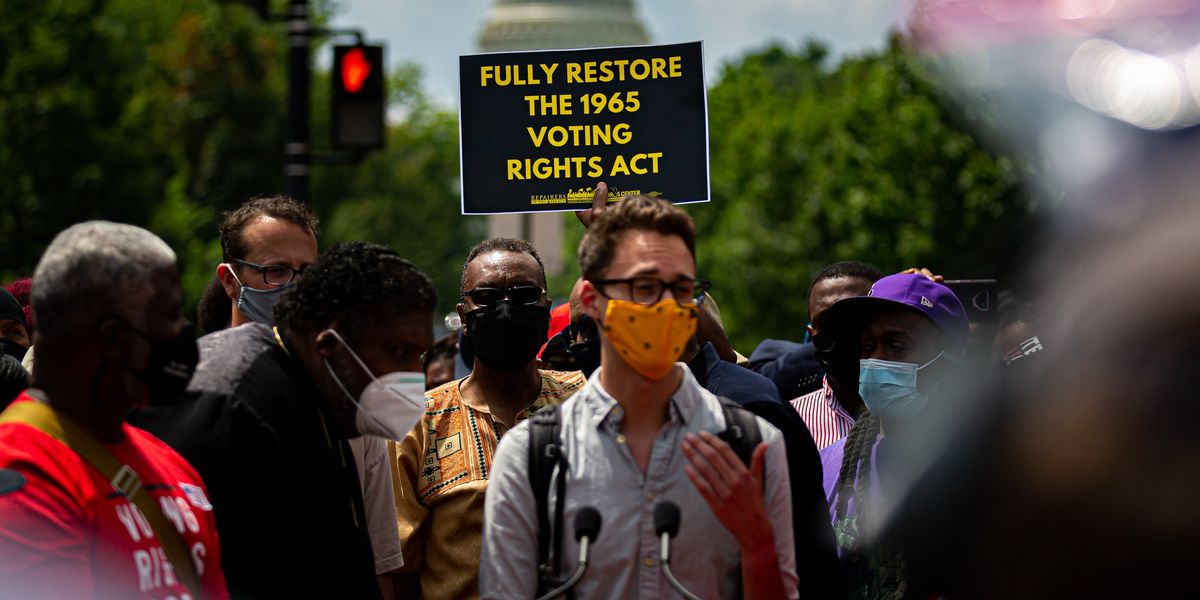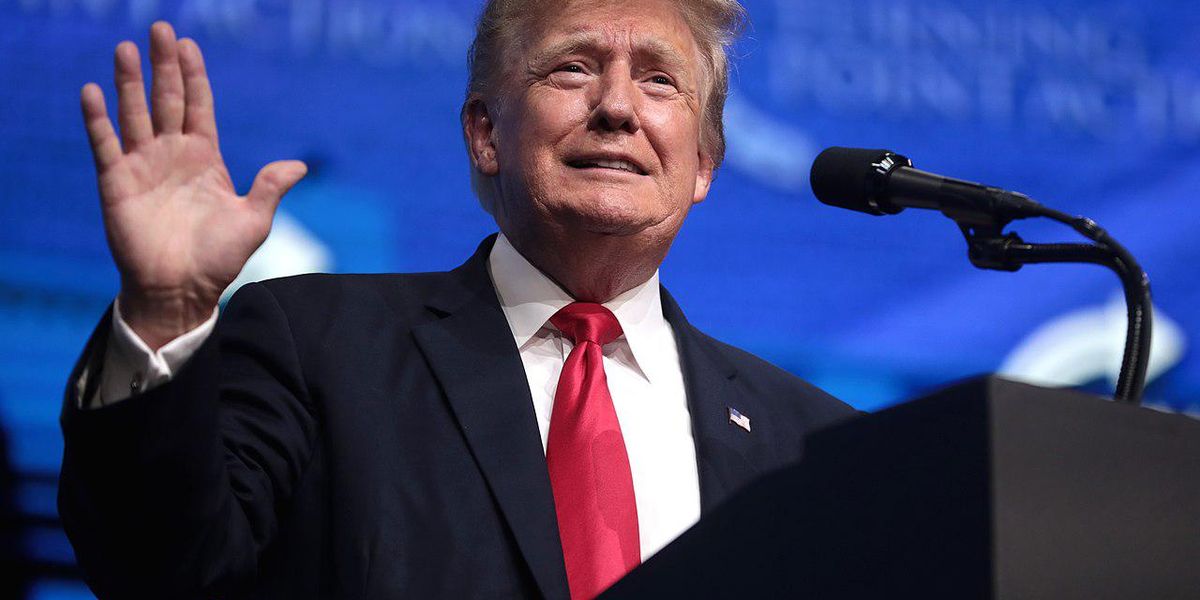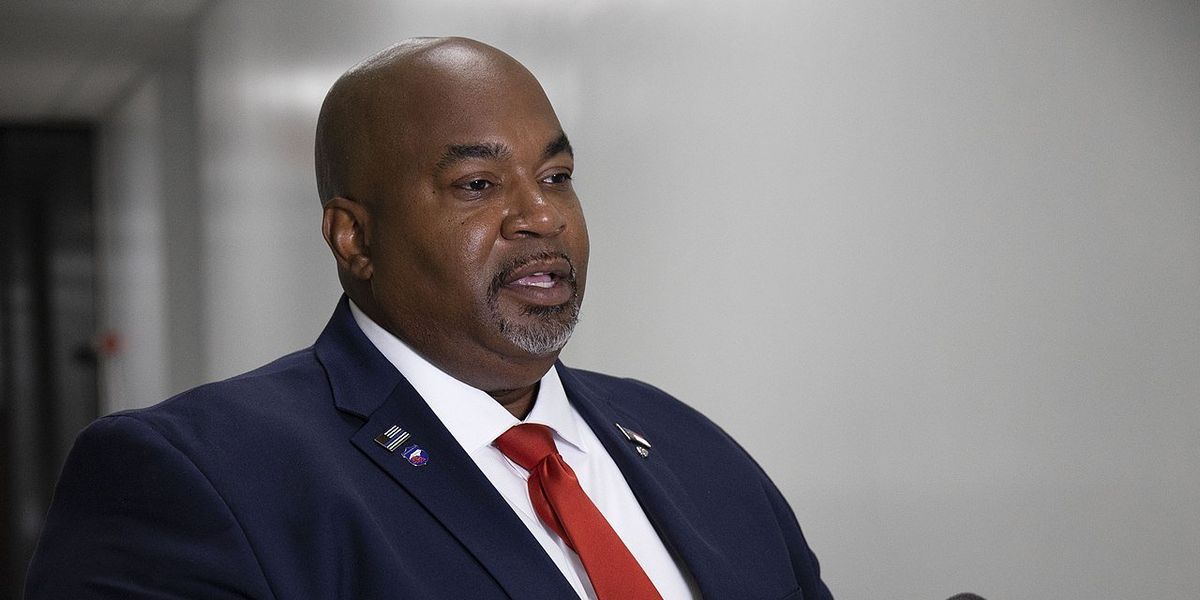Originally at https://thefulcrum.us
Former President Donald Trump’s remarks about being a “dictator on the first day only” of a potential second term have sparked considerable debate. Despite his claims of unfamiliarity with Project 2025 and the Heritage Foundation’s announcement that it was ending that work, the goals articulated in the document align closely with his stated priorities. Trump’s promise to “close the border and drill, drill, drill” mirrors Project 2025’s objectives, suggesting a coordinated effort to reshape the DOI from day one of a new conservative administration.
The chapter on the Department of the Interior, authored primarily by William Perry Pendley, former acting director of the Bureau of Land Management, sets a combative tone. Pendley’s tenure at BLM was marked by aggressive moves to reduce protections for public lands and wildlife, leading to a demoralized agency described by insiders as a “ghost ship.” His role in Project 2025 signals a continuation of these policies, aiming to dismantle what he and his colleagues view as an overreaching administrative state.
Departmental overhaul
The Department of the Interior encompasses nine bureaus, each with distinct missions ranging from managing national parks to overseeing energy resources. Project 2025 proposes several administrative and structural changes. One of the first major proposals is to relocate BLM headquarters back to the American West from Washington, D.C. This move, combined with the implementation of Trump’s Schedule F proposal aimed at increasing accountability in hiring and firing federal employees, suggests a significant shift in the DOI’s operational dynamics.
Furthermore, placing all BLM law enforcement officers in an exclusively law enforcement chain of command signals a more rigid approach to land management enforcement.
Energy production and resource extraction
The energy section of the chapter was written by Kathleen Sgamma of the Western Energy Alliance, an oil and gas industry group; Dan Kish of the Institute for Energy Research, a think tank long skeptical of human-caused climate change; and Katie Tubb of the Heritage Foundation. The authors set the tone of the section, titled “Restoring American Energy Dominance,” with this passage:
“Given the dire adverse national impact of Biden’s war on fossil fuels, no other initiative is as important for the DOI under a conservative President than the restoration of the department’s historic role managing the nation’s vast storehouse of hydrocarbons, much of which is yet to be discovered.”
The energy section calls for rolling back Biden-era executive orders and reinstating Trump-era policies that favor oil and gas development. Specific proposals include expanding onshore and offshore oil and gas lease sales, restarting the federal coal leasing program, and reversing protections for areas like the White River National Forest in Colorado.
This aggressive push toward fossil fuel development raises environmental and economic concerns. Critics argue that such policies could undermine efforts to combat climate change and protect public lands from overexploitation.
Regulatory and policy reforms
Project 2025 also targets regulatory frameworks like the National Environmental Policy Act, seeking to streamline environmental reviews and permitting processes while eliminating climate reviews for federally funded projects. The document proposes reinstating Trump-era limitations on the Endangered Species Act and the Migratory Bird Treaty Act, which could lead to reduced protections for vulnerable species.
Further, the project aims to revoke President Joe Biden’s 30-by-30 plan, which aims to conserve 30 percent of U.S. lands and waters by 2030, and seeks the repeal of the Antiquities Act of 1906, potentially opening up national monuments to commercial activities.
Implications for Indigenous lands
The document outlines plans to facilitate fossil fuel and mineral development on Indian lands and overhaul the Bureau of Indian Education. These proposals, combined with securing the nation’s borders to protect tribal lands, suggest a significant shift in how the federal government interacts with Native American tribes.
A critical examination
Project 2025 presents a vision for the Department of the Interior that aligns closely with the priorities of the Trump administration. While Project 2025 presents a bold vision for the department, its potential impacts on public lands, environmental protections and Indigenous rights demand critical scrutiny. Proponents argue that these changes are necessary for economic growth and national security, but the emphasis on deregulation and resource extraction raises concerns about long-term sustainability and the balance between economic development and conservation. As voters and policymakers consider these proposals, it is essential to weigh the long-term consequences for America’s natural heritage and the principles of conservation that have guided the DOI for over a century.
The sweeping changes proposed in Project 2025 underscore a broader ideological battle over the role of government in managing natural resources and protecting the environment. As these plans come under public and political scrutiny, the stakes for America’s public lands and natural heritage could not be higher. The next administration’s approach to these issues will shape the nation’s environmental and energy policies for years to come.
We are all characters in James Madison’s worst nightmare.
The plot of this bad dream is simple: Marginalized Americans are deviously tormented by an effort to reassign power from the federal government to the states. The antagonists are many: the conservative bloc of the Supreme Court, the ineffective and anemic Congress, well-funded interest groups, state officials, even those who espouse the dictates of Project 2025. The theme, like most nightmares, is terrifying: tyranny. Specifically, tyranny of the majority.
Madison’s reputation for brilliance comes partially from his ingenious solution to the curse of majority tyranny. Majorities, he insisted, can abuse just as cruelly as autocrats. Take states, for example. A permanent majority in the state legislature can trample on the rights of the minority without fear of reprisal. “By a faction,” he wrote in Federalist 10, he’s talking about those who are “actuated by some common impulse of passion, or of interest, adversed to the rights of other citizens, or to the permanent and aggregate interests of the community.” Factions — interest groups and political parties in the modern vernacular — are wicked. They care mainly about their own welfare; the well-being of the community is a distant second.
Madison’s solution to this form of tyranny is dazzling. Instead of small-scale republics like states, the font of power, he reasoned, should always reside in Washington, where no single faction can gain a permanent majority. “Extend the sphere, and you take in a greater variety of parties and interests; you make it less probable that a majority of the whole will have a common motive to invade the rights of other citizens; or if such a common motive exists, it will be more difficult for all who feel it to discover their own strength, and to act in unison with each other.” The more geographically expansive the nation is, and the more distinctively diverse We the People are, the greater our freedom, the louder our voice and the closer we come to achieving justice.
The plot of our Madisonian nightmare includes several intersecting storylines. Most notably is the affinity of federal officials, especially on the right, to interpret the Constitution and federal statutes as if the United States is some kind of commonwealth, a voluntary association of independent sovereign states. I can assure you that a commonwealth America is not.
The most notorious antagonists in this nightmare are the Supreme Court justices. As Lala Wu recently wrote in Democracy Docket, “an under-the-radar consequence of the Supreme Court’s 6-3 conservative supermajority is that it is poised to hand over unprecedented power to state governments.” Lawsuits involving environmental protection, health care, gun control, school curricula, diversity initiatives, even how we describe our collective past, are consistently falling the states’ way.
The Dobbs decision is just the most familiar case illustrating the transfer. Here, the Republican-appointed majority overturned Roe v. Wade and, in the process, empowered state officials to determine the extent to which women can seek legal abortions. Blue states can protect a woman’s access to reproductive health while red states can impose severe restrictions, or outlaw the procedure altogether. Madison would be horrified. Abortion seekers in red states, he would scream, are being tyrannized by the majority.
The Chevron deference case is equally frightening. Removing federal agencies as the executor of often-vague xongressional statutes will not only authorize judges to fill the breach, but also empower state officials. “States,” Rich Maloof, deputy director of the Senate President’s Forum, recently said, “are more than willing to shape policy in the abyss of federal inaction.”
Congress is also to blame. Members from both sides of the aisle seem content not only to write vague laws, but also to engage in more infighting than lawmaking. Productivity in Congress has steadily declined over the last 50 years.
Conservative influencers interest groups like the NRA, leaders of the Republican National Committee and GOP state committees, lobbyists, authors of Project 2025 and so on are expending enormous resources to galvanize support for a 10th Amendment revolution. In their mind, that particular addition to the Constitution no longer states “but atruism that all is retained which has not been surrendered.”
Can we turn this dystopian tale around? Of course. But we need to act, individually and collectively. First, Americans should take notice of the slow transfer of power. It’s happening all around us. Second, citizens must vote up and down the federalism ladder. State representatives are just as key to the lives of Americans as is the president or Congress. Third, we should raise our voices. Peaceful protest can bring much needed attention to those marginalized communities that are so often ignored by the majority. Fourth, we should work towards real constitutional and legal reform. Term limits for members of Congress, restructuring the federal courts, pursuing social and environmental justice initiatives, and holding our elected representatives accountable are all tangible actions that will help. Fifth, we should always remind our elected officials that they maintain their power only at the consent of the governed.
One thing is certain: Inaction will prolong this frightening dream. Our Madisonian nightmare will endure for as long as we remain passive to its plotlines. Let’s honor the wise counsel of the father of America’s Constitution and wake up.
There must be a better way. A way to restore faith in democracy. A way to uphold freedom, equality and justice for all. A way to solve problems, not just win elections.
Fortunately, there is. It’s called a citizens’ assembly.
Citizens’ assemblies bring together everyday people from all walks of life to tackle tough issues. Chosen by democratic lottery, the members are representative of their communities’ diversity. They hear from experts, deliberate with one another, and collaborate to find common ground. The results are often surprising — and surprisingly effective.
In Petaluma, Calif., a citizens’ assembly in 2022 convened 36 residents to decide the fate of the city’s large fairgrounds. After days of hearing from people on all sides of the debate — and spending hours in thoughtful discussion — the assembly issued a series of detailed recommendations to guide local officials. Similar assemblies have been used in Oregon, Canada and, most recently, Montrose, Colo.
The magic of citizens’ assemblies lies in how they take partisanship out of the equation and encourage people to cooperate. Freed from bad incentives, members can listen, learn and work toward genuine solutions. Along the way, the members forge bonds of trust across the divides and find belonging in a new kind of community.
Here in North America, our organization — the Federation for Innovation in Democracy — is working to spread the power of citizens’ assemblies far and wide. We seek to advance a democratic culture that’s inclusive, responsive and holds government accountable between elections.
At FIDE, we believe that citizens’ assemblies are the antidote to the polarized politics that’s left so many desperate for change. By empowering everyday citizens to engage directly in policymaking, citizens’ assemblies honor the principle that all voices deserve to be heard. What’s more, they offer Americans a new form of service, a way for everyday citizens to contribute their time and talents to something greater than themselves.
Not only do we advocate for citizens’ assemblies, we train practitioners and public managers at our Capacity Building Schools and provide technical guidance to help implement them — like the upcoming assemblies in Utah, British Columbia and Colorado.
Citizens’ assemblies can be used not just at the local level, but to heal our national nightmare, too. In the wake of Biden’s withdrawal (and an incendiary Republican convention) some commentators have called for an open process to let delegates meet candidates, hear their ideas, and think collectively about the best nominees.
That’s good. But we can do better. Imagine if instead of a handful of early primary states wielding outsized influence, we convened a national citizens’ assembly to help vet candidates and craft party platforms (the way the Citizens’ Initiative Review has studied referenda in several states). Everyday Americans from across the country would have a real say, fulfilling the promise of government truly of, by and for the people.
Or picture a standing citizens’ assembly working alongside Congress to break through partisan gridlock on issues like immigration, wages and health care reform. Their recommendations — rooted in deliberation and emerging from considered judgment, rather than political gamesmanship — could provide the blueprint for balancing individual liberty and the common good.
Outlandish? Maybe. But the governments of our peer nations, like the German Bundestag, are already doing this. And as we approach another contentious election, it’s time to think big about renewing American democracy. Citizens’ assemblies won’t solve every problem. Yet through an inclusive and transparent process, they make for a powerful tool to put “We the People” back at the center.
Americans are right: There is a better way. Through the power of everyday people, citizens’ assemblies can chart a new course for our nation — one that honors our most cherished ideals, strengthens the fabric of our democracy and gets our country back on track. It’s time we give them a try.
Read the Original Story





